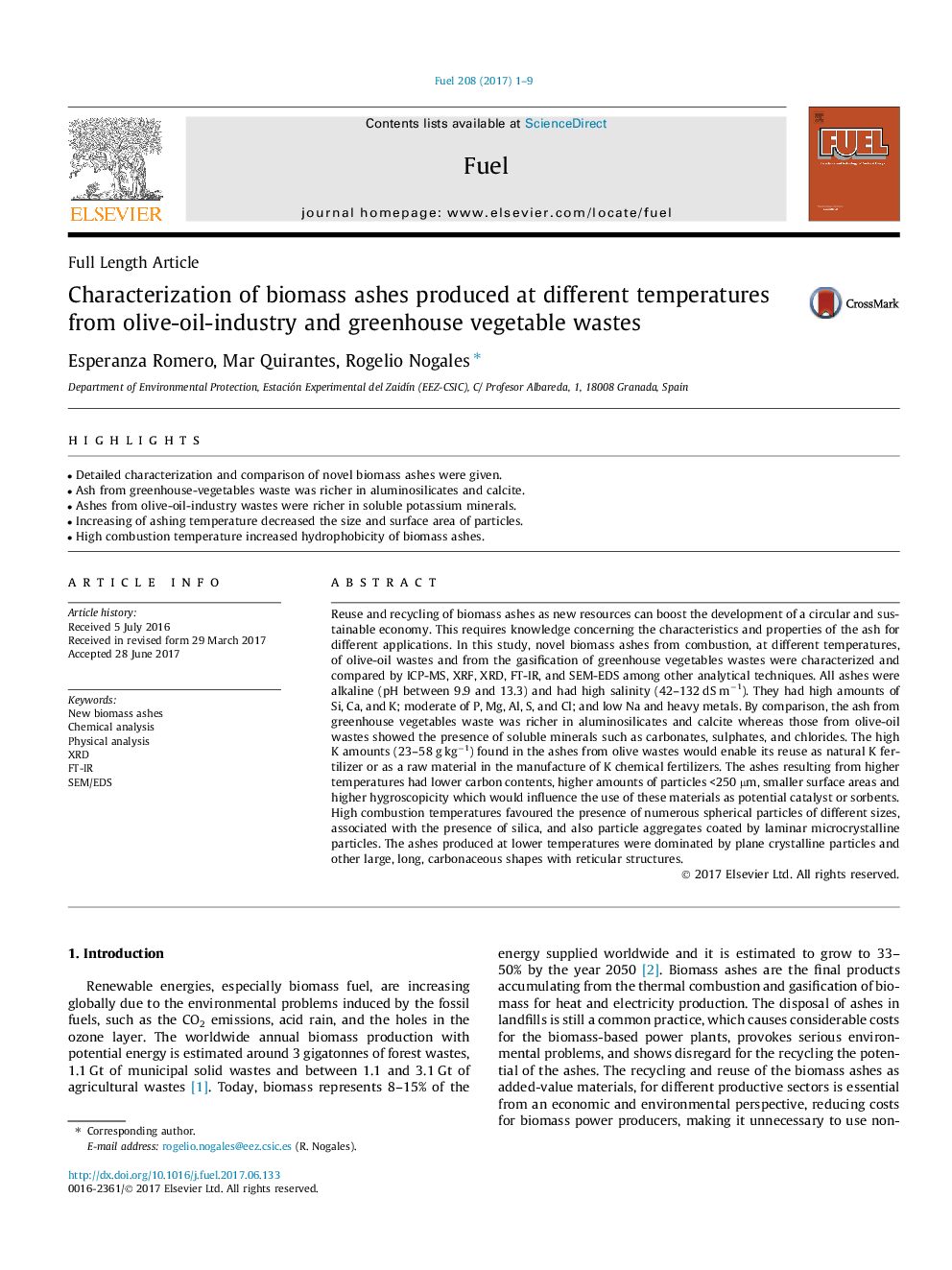| کد مقاله | کد نشریه | سال انتشار | مقاله انگلیسی | نسخه تمام متن |
|---|---|---|---|---|
| 6474048 | 1424956 | 2017 | 9 صفحه PDF | دانلود رایگان |
- Detailed characterization and comparison of novel biomass ashes were given.
- Ash from greenhouse-vegetables waste was richer in aluminosilicates and calcite.
- Ashes from olive-oil-industry wastes were richer in soluble potassium minerals.
- Increasing of ashing temperature decreased the size and surface area of particles.
- High combustion temperature increased hydrophobicity of biomass ashes.
Reuse and recycling of biomass ashes as new resources can boost the development of a circular and sustainable economy. This requires knowledge concerning the characteristics and properties of the ash for different applications. In this study, novel biomass ashes from combustion, at different temperatures, of olive-oil wastes and from the gasification of greenhouse vegetables wastes were characterized and compared by ICP-MS, XRF, XRD, FT-IR, and SEM-EDS among other analytical techniques. All ashes were alkaline (pH between 9.9 and 13.3) and had high salinity (42-132 dS mâ1). They had high amounts of Si, Ca, and K; moderate of P, Mg, Al, S, and Cl; and low Na and heavy metals. By comparison, the ash from greenhouse vegetables waste was richer in aluminosilicates and calcite whereas those from olive-oil wastes showed the presence of soluble minerals such as carbonates, sulphates, and chlorides. The high K amounts (23-58 g kgâ1) found in the ashes from olive wastes would enable its reuse as natural K fertilizer or as a raw material in the manufacture of K chemical fertilizers. The ashes resulting from higher temperatures had lower carbon contents, higher amounts of particles <250 µm, smaller surface areas and higher hygroscopicity which would influence the use of these materials as potential catalyst or sorbents. High combustion temperatures favoured the presence of numerous spherical particles of different sizes, associated with the presence of silica, and also particle aggregates coated by laminar microcrystalline particles. The ashes produced at lower temperatures were dominated by plane crystalline particles and other large, long, carbonaceous shapes with reticular structures.
Journal: Fuel - Volume 208, 15 November 2017, Pages 1-9
